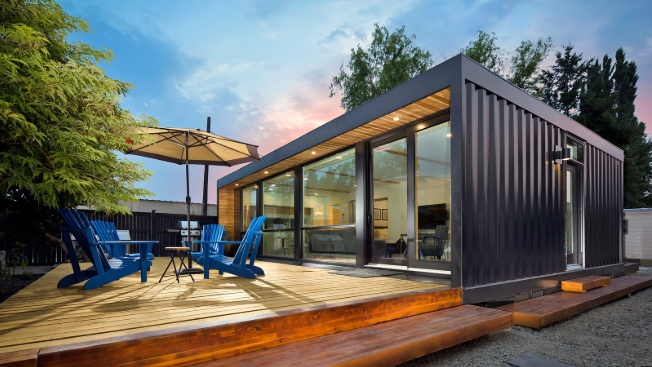Could Shipping Container Homes Revolutionize Urban Housing?
As cities grapple with affordability crises and environmental concerns, shipping container homes emerge as a disruptive solution. These innovative dwellings transform steel cargo units into stylish, functional spaces. Curious how industrial materials become dream homes? Start exploring container homes online today.
What Makes Container Homes Unique?
Container homes repurpose decommissioned shipping containers, typically made from corten steel, into modular living spaces. Their standardized sizes (20ft or 40ft long) enable seamless stacking and creative configurations—think rooftop gardens or multi-story designs. In the United States, architects increasingly use these units to craft studios, vacation cabins, or even urban apartment complexes.
The steel frames provide unmatched durability, resisting extreme weather and pests. Unlike traditional homes, container homes require minimal foundational work, cutting construction timelines by 30–50%. Their modularity also allows phased expansions: homeowners can add units as budgets or family sizes grow. From off-grid tiny homes to luxury waterfront properties, container homes adapt to virtually any lifestyle.
Affordable Answers to Housing Shortages
With median U.S. home prices exceeding 400,000,container homes offer a lifeline. A basic 320 sq.ft unit starts at 25,000—less than half the cost per square foot of conventional builds. Recycled containers slash material expenses, while prefabrication reduces labor. Many DIY enthusiasts even self-build using online blueprints, though professional conversions ensure insulation and plumbing meet codes.
Sustainability drives their appeal. Each reused container prevents 3,500 kg of steel waste. Energy efficiency shines too: double-walled designs with spray foam insulation outperform traditional walls in thermal retention. Solar panels and rainwater systems easily integrate, creating net-zero possibilities. Cities like Detroit and Austin now incentivize container home projects to combat homelessness and reduce urban sprawl.
Portability Redefines Modern Living
Container homes challenge the notion of permanent residency. Their steel frames withstand relocation, letting owners move entire houses via trucks or ships. Digital nomads deploy them as mobile offices; disaster relief agencies use them for emergency shelters. In California's wildfire zones, families install container homes as fire-resistant retreats that can be hauled to safer grounds.
Customization thrives despite their industrial roots. Units get cutaways for panoramic windows, welded together for open-concept layouts, or clad in wood siding for rustic charm. One Brooklyn couple transformed four containers into a 1,600 sq.ft loft with a rooftop terrace, proving industrial materials can feel inviting.
The Verdict on Container Home Viability
Container homes merge pragmatism with innovation, addressing affordability, sustainability, and flexibility in housing. While challenges like zoning laws and insulation myths persist, their growing adoption in the United States and globally signals a shift toward adaptive reuse. Whether as primary residences, vacation properties, or community housing, these steel structures prove that eco-conscious living doesn't require compromise.
Ready to rethink housing? Container homes aren't just a trend—they're a blueprint for resilient, affordable futures. Dive deeper with a quick online search to discover designs reshaping urban skylines and suburban backyards alike.
